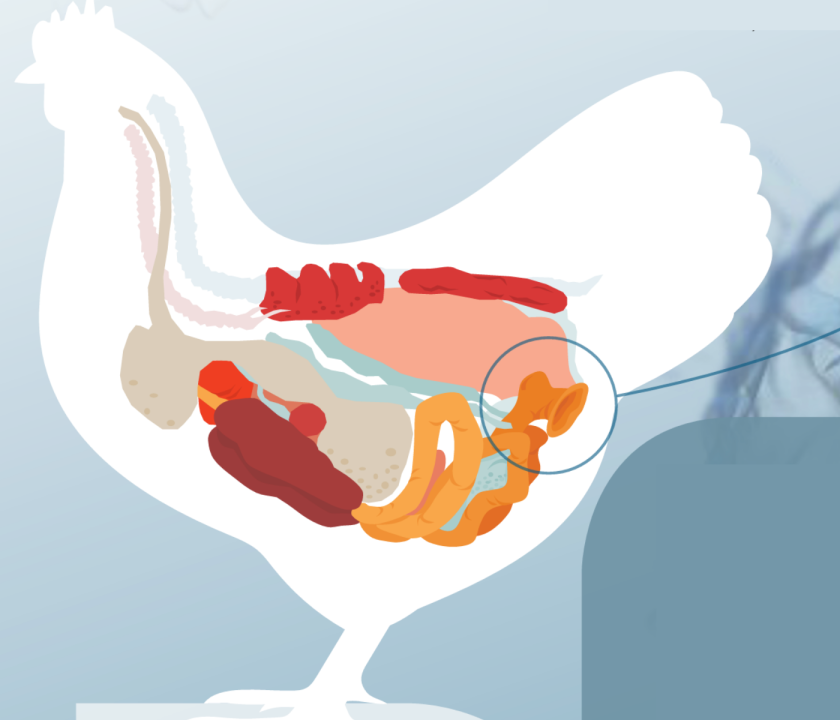Contenido disponible en: Português (Portuguese (Brazil))
The birnavirus that causes Gumboro disease is not the only one that affects the bursa of Fabricius and other lymphoid organs, but it is the most important.
The immune system is strategic. The demand for immune efficiency results from environmental pressure, including biosecurity failure and reduced antibiotic use. This requires effective stimulation of the individual immune response of the animal or the flock while adapting the poultry house to the vaccine strains.
Let’s review the bird’s immune system and its biggest threat, namely Gumboro disease, its immunopathology, and the lesions resulting from the vaccine “aggression,” in addition to some points not very considered when the subject is discussed.
The birnavirus that causes Gumboro’s disease is not the only one that affects the bursa of Fabricius and other lymphoid organs. Still, it is the most important, even because of its resistance and ability to contaminate facilities, notably because of the habit of reusing the “litter,” in addition to its infectivity, pathotyping, and mutability (new variants).
MORPHOLOGY / HISTOLOGY
Keep up to date with our newsletters
Receive the magazine for free in digital version REGISTRATION ACCESS
YOUR ACCOUNT LOGIN Lost your password?

